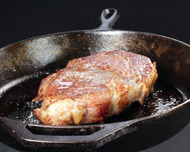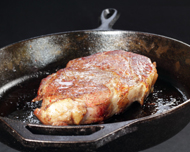What Is Clarified Butter?
Ever tried to sear a steak using butter instead of oil? There was probably a lot of smoke, the smell of something burning, and a blackened, ruined piece of meat. What happened? Milk solids, that's what happened. Butter, by law, is composed mostly of milk fat (80 percent minimum, to be exact). The remainder is water and milk solids. It's these solids that burn and impart a bitter flavor when exposed to too much heat. There's a simple solution, however. (Photo courtesy of iStock/wsmahar)
It's possible to remove these milk solids in a process known as clarifying. Simply take a stick or two of butter, and place it in a bain-marie or a small stainless steel bowl. Place the bowl in a pot large enough to fit it snugly and that's filled with some water. Bring the water to a simmer over low heat and allow the butter to melt slowly. The water will help limit the temperature in the bowl and keep the butter from burning. As the butter melts, the milk solids will rise to the top. At this point, skim the solids and foam off the top. Remove from heat carefully and there's your clarified butter.
Photo courtesy of iStock/tunart)
And if you don't want to make your own clarified butter, you can always purchase it. Commercially sold clarified butter is often marketed as ghee, and it can be found in the international foods aisle of the grocery store. More flavor, less effort — that's always a win in the eyes of any passionate home cook.
Click here to see the Apple Strudel with Persimmon Sauce Recipe.

